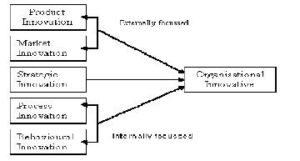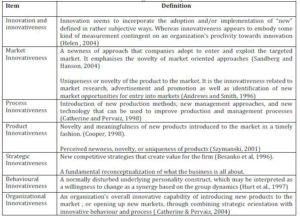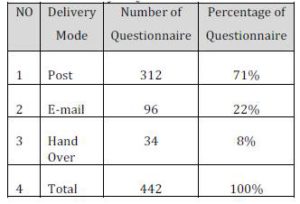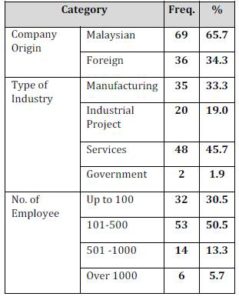Introduction
Many countries in the world have experienced rapid industrialization in the past three decades, which has transformed their agricultural based economies into manufacturing based economies. Due to the lack of interest or technology domestic investors have not become involved in risky projects with unattractive returns. Respectively, foreign investors are more inclined to get into joint ventures with the governments that provide capital subsidies and protection of the domestic market.
This resultant industrialization became heavily dependent on foreign partners, consultants and contractors. The privileges provided by governments to big foreign firms sustained their business and ensured good returns for their ventures, while the situation was different for local firms with no foreign equity participation. They were either ignorant of organizational performance or did not feel the need to analyse as they were significantly protected.
The protective nature and the lack of stiff competition that some of these firms enjoyed, and due to the lack of exposure and business naivety for others, among these firms deprived them of innovation or generally any organizational innovativeness. Only recently, more specifically, since the 1997 economic Asian crisis, did some of these organizations start expanding their energy to improve performance in terms of innovativeness.
MASTIC’s (2003) national survey of innovation for the year 2000-2001, reports that in some developing countries, such as Malaysia, the number of patents applications lags behind the major OECD countries and is in general low by international standards as well as being heavily dependent on sources/applications. It also reports that its achievement is commensurate with the level of GNP per capita. In order to do this, the developing countries need to develop human resources in R & D to compete successfully in the international market.
According to competitiveness input factors (IMD, 1999), one of the eight factors that is used to determine national competitiveness is people. This shows that countries have to invest more in the development of its human capital in order to bridge the competitiveness gap between the nation and other countries. On the technological front, it is worth looking at the R & D expenditure.
Though Malaysia is industrially a prominent country in South-East Asia with a significant share of global business, there is a dearth of empirical studies on organizational innovativeness in the Asian context. However, some fragmented works are available on specific topics such as product innovativeness versus process innovativeness, which are factional components of overall organizational components. This work could hopefully cause a further stream of research in this area, which should contribute positively to the industrial sectors.
Significance of the study
An organization‘s capability to innovate is acknowledged as one of the crucial factors for it to survive and succeed. The role of information as a crucial force of social and economic development is widely acknowledged. In particular, within the business setting, innovation is often considered to be a vital source of strategic change, by which a firm generates positive outcomes including sustained competitive advantage (Salavou, 2004).
This is significantly important for Malaysia as its share of GDP from industry is predominant and its social and economic status can be raised enormously by emphasizing innovation in organization. Becoming innovative demands more than debate and resources; it requires an organizational culture that constantly guides organizational members to strive for innovation and a climate that is conductive to creativity (Levent & Mehmet, 2004).
If the notion of innovation culture is to be useful, it is important to be clear about what we mean by the term. Innovation culture is pertinent and complex. Innovation is best described as a pervasive attitude that allows business to see beyond the present and create the future. The key driver of the organization’s ability to change is innovation.
However, simply deciding that the organization has to be innovative is not sufficient. That decision must be backed by actions that create an environment in which people are comfortable with the innovations they create. Virtually all companies talk about innovation and the importance of carrying out innovation, many actually try to do it, but only a few actually succeed. The reality is that innovation, for the most part, frightens organizations because it is inevitably linked to risk. Many companies pay lip service to the power and benefits of innovation.
To a large extent most remain averse to the aggressive investment and commitment that innovation demands. Even though innovation is debated at senior level meetings as being the lifeblood of the company, and occasional resources and R & D funds are thrown at it, commitment usually ends there! It is intangible and poses a bigger hurdle in the case of overall organizational innovativeness as it is holistic in nature and requires an organizational culture that constantly guides organizational members to strive for innovation. 3.
Framework Development
Researchers such as Subraminian and Nilkanta (1996) and North Smallbone (2000) address the concern of measuring organizational innovativeness effectively. However, the primary focus of these studies is not scale development. As such, the measures used are often ad hoc and do not conform to systematic procedures for scale development.
Moreover, the scales used in the area of innovative capability often adopt a certain perspective, such as product innovativeness instead of overall innovative capability. A prime interest in the existing literature is the investigation of innovation activities and their associations, where adoption of one or more innovations is examined as the dependent variable and linked to attributes of the organization, the individual respondent, and the innovation itself.
This has led to confusion in innovation research, either making it difficult to compare findings across studies or leading to biased conclusions (Subramanian and Niktanta, 1996). For these reasons, the extant innovation literature often does not arrive at a consensus regarding many issues. Reconciling the contradiction require a validated measurement scale of an organization’s overall innovative capability, i.e. propensity or likelihood that an organization produces innovative outcomes. Catherine and Pervaiez, (2004) identified five main areas that determine an organization’s overall innovativeness. They are product innovativeness, market innovativeness, process innovativeness, behavioural innovativeness and strategic innovativeness. These five aspects are inter-linked. In particular, product and market innovativeness are inter-twined.
They are externally focused and market-based, whereas behaviour and process innovativeness are internally-focused, and underline the need for product and market innovativeness, while strategic innovativeness highlights an organization’s ability to identify external opportunities in a timely fashion and match external opportunities with internal capabilities in order to deliver innovative products and explore new markets or market sectors.
The advantage of using an organizational innovative capabilities construct of innovation can be demonstrated from three aspects: 1. Organizational innovativeness is represented through certain traits such as newness and novelty etc., and can be easily quantified in terms of the degree that organizations are innovative. 2. Organizational innovativeness can be constructed to cover various key aspects of innovation; a multidimensional measurement build up is more reliable for measuring overall innovativeness. 3. Organizational innovativeness measures capabilities of an organization and indicates the propensity of the organization to introduce new products to the markets, or open up new markets. Measuring overall innovativeness is not only about measuring new products developed or new market opportunities, but also prescribes the underlying elements of innovation outcomes, i.e. behavioural innovativeness, process innovativeness, and strategic innovative orientation.
This organizational construct that is developed takes a step forward, effectively measuring an organization’s innovative capability. It can identify and measure strengths/weaknesses of organizational innovativeness at the key component level. It helps an organization to overcome weakness identified at the component level rather than looking at “too many aspects of multidimensional but unidentified areas”.

Figure 1: Research Framework
As shown in figure 1 these five innovative components are interlinked in that each item complements and results in innovativeness of other component innovative items. In a typical case, where the higher management of an organization, with its management innovativeness, strategize to create overall innovativeness, they will bring behavioural changes into an organization (though gradual) such as encourage lateral thinking, openness. And, coupled with enhanced process innovativeness (partly due to the behavioural changes), products coming out will have newness in nature. These innovative products may help to enhance the products gain in the marketplace.
Measuring behavioural innovativeness of an organization cannot be accompanied simply by examining occasional innovation events, or innovative characteristics of certain small groups of an organization. The behavioural dimension should reflect the “sustained behavioural change” of the organization towards innovations (Avlonitis et al., 1994).
Research Background
An organization’s overall innovativeness is reflected by many characteristics of organization. Measurement of overall organizational innovativeness can be performed by evaluating these characteristics if appropriately identified. Previous studies used either a single variable or a limited number of variables to characterize innovative activities.
However, measuring a firm’s innovativeness based on only a few indicators could be misleading because of the complexity of the innovation process, cost and resources. From an extensive review of existing literature, 48 characteristic variable items are identified that determine an organization’s overall innovativeness. These 48 items can be grouped into five main areas of innovativeness. They are product innovativeness, process innovativeness, market innovativeness, behavioural innovativeness and strategic innovativeness. These five aspects together depict an organization’s overall innovativeness practices. The objectives have been set for this research to give an insight into firms’ innovativeness as well as identify the measures based on organisational innovative capabilities in Malaysian firms.
Definition of Innovativeness
Innovation may be in various forms such as product or process innovation, radical or incremental innovation, administrative or technological innovation etc. innovation could be defined in terms of something that is invented for the first time and is commercially successful (Hansen and Wakonen, 1997).
Catherine and Pervaiz (2004) define organizational innovativeness as an organization’s overall innovative capability of introducing new products to the market, or opening up new markets, through combining strategic orientation with innovative behavioural and process. The vast majority of researchers consider organizational innovativeness as a unidirectional phenomenon (Wilson et al., 1999). In this respect, literature offers numerous definitions that refer to different aspects within the organizational setting, such as technology-related, behaviour-related and product-related.
Table 1: Some of the best fitting definitions by various researchers

Importance of Innovation and Innovativeness
The economic potential of a nation is dependent on the quality and quantity of its workforce, and its organizational management. The world today is characterized by rapid development in new technologies such as information technology, fusion of application in sciences, cell biotechnology, genetic engineering, new materials, as well as production and management techniques. Historical evidence points clearly to the need for research and development because industries will decline if no efforts are taken to adapt, improve its products or discover new ones.
Increased innovation brought higher competitiveness and complexities that would lead to the next stage of innovation. Innovative strength at specific areas has paved ways to interconnected operations and overall systems as a total effective programme. Standalone innovative programmes have failed to compete with overall innovative programmes as the latter has created advantages not only from the innovativeness of none specific components (product or process) but multi-components such as industry networks, management innovativeness, process innovativeness and market innovativeness.
Organizational Innovation
Various approaches to creating an innovative organization or transforming stagnated organizations into innovative ones have become established in recent decades (Drucker, 1999). The rationale behind this is that a high level of organizational innovativeness leads to better organizational performance. According to Drucker (1999), few empirical studies have closely examined the relationship between the level of organizational innovativeness and business performance, especially in areas such as sales and employment growth.
However, the focus has remained predominantly on issues of finance, cost, profitability and revenues (Tidd et al 1998, Drucker, 1999). Even fewer studies have addressed the impact of change in organizational innovativeness on organizational performance (Damanpour and Gopalakrishnan, 2001). In the Malaysian scenario, there is hardly any study available on performance innovativeness focusing on Malaysian organizations operating on local or foreign soil. Research into innovativeness has become a multidisciplinary effort, including sociology, psychology, organizational behaviour, economics and marketing.
It has also been approached in a variety of ways, such as through customer and/or provider perspective (Drucker 1999), or levels of innovation in terms of individuals, teams/projects and organizations (Subramanian 1996). Lam (2004) argues that even though the existing literature on organizational innovation is indeed very diverse, it is not well integrated into a coherent theoretical framework; the literature of organizational innovation can be broadly classified into three different streams, each with a different focus and a set of different questions that it addresses. 1) Organizational design theories focus predominately on the link between structural forms and the propensity of an organization to innovate.
The unit of analysis is organization and the main research aim is to identify the structural characteristics of an innovative organization, or to determine the effects of organizational structural variables on product and process innovation. 2) Theories of organizational cognition and learning, by contrast, tend to focus on the microlevel process of how organizations develop new ideas for problem solving. They emphasise the cognitive foundations of organizational innovation, which is seen to relate to the learning and organizational knowledge creation process.
This camp of research provides a micro-lens for understanding the capacity of organizations to create and exploit new knowledge necessary for innovative activities. 3) A third strand of research concerns organizational change and adaptation processes underlying the creation of new organizational forms. Its main focus is to understand whether originations can overcome inertia and adapt in the face of a radical shift in environment and technological change, and whether organizational change occurs principally at the population level through selection (Tushman, 1994). Organizational innovation may be a necessary pre-condition for technological innovation, and, thus, it is important to take greater account of the role of endogenous organizational forces such as capacity for learning, value, interests and power in shaping organizational transformation and technological change (Lam, 2004).
Research Design and Methodology
To provide avenues to fulfil the purpose of this study, a survey has been carried out and data collected in order to find the research objectives. This survey was conducted in a two month time frame, which was completed in June 2006. Responses received after June were ignored for purposes of analysis. No specific type of company/industry was targeted as the purpose was to find the overall organizational innovativeness of any company operating in Malaysia.
The analysis was based purely on the perception of respondents and, hence, though typical of any survey, an error of non-uniformity of expression of facts is unavoidable. A 48 item questionnaire, which was generated from an extensive review of the literature, was used to collect empirical data. The questionnaire was distributed by various modes including mail, e-mail and self-administered handing out by the researcher and assistant researchers. The lists of companies were available from industrial sources and the Ministry of International, Trade and Industry (MITI). A total of 442 respondents were given questionnaires of which the breakdown of delivery is shown in Table 2.
Table 2: Summary of Questionnaires extended

As shown in Table 2, the rate of response from traditional postal response is the lowest at 8.0% followed by email at 54.2 %, with the majority of email responses received from known respondents. Responses from questionnaires that were handed out were higher at 82.4 %. Data was collected from the Kuala Lumpur Metropolitan area.
The researcher used convenience sampling to get as many respondents as possible from the Golden Triangle of Malaysia, where businesses are concentrated in the capital city. It is also noted that firms under study have subsidiaries and branch offices scattered throughout Malaysia. As this study was to find the level of overall innovativeness (overall aspects/activities of the organizations) and also to find the structural relationship among the component innovativeness, the questionnaire was targeted at CEOs and those at senior executive level who are aware of the overall aspects of their respective organization.
The respondents to this survey came from the majority group, which are young executives in their twenties and thirties. The questionnaire was not targeted at any particular industry type or size of company and was distributed regardless of the origin and type of industry. The list of company addresses was prepared by randomly selecting companies known to the researcher as well as from various available industrial sources and the MITI. The survey questionnaire with its attached cover letter consisted of three sections covering the general information of the company, organizational innovative components using 48 items in a 5-point Likert scale and the last section was designed for the demographic particulars of respondents. Table 3 shows the profile of surveyed companies.
Table 3: Companies Profile

Data Analysis
A single factor analysis was performed on all 48 variables using Varimax rotation with Kaiser Normalization to reduce the item variables into meaningful groups. Kaiser criterion was adopted to determine the number of factors chosen. The Kaiser rule is to drop all components with eigenvalues under 1.0. Though the literature review was to map overall innovativeness into five main components, Exploratory Factor Analysis (EFA) was used for finding the number of component factors the item can be collapsed to.
The extraction method used was Principal Component Analysis (PCA). Varimax rotation was chosen to maximise the variance of squared loadings of factors on all the variables in a factor matrix, which has the effect of differentiating the original variables by extracting factors. Loadings at initial condition and after rotation were performed although the number of factors remained the same in both cases. This meets the requirements of at least three variables per factor (Kim and Mueller, 1978b, 77). It is to be highlighted here that the purpose of analysis was to find the number of factors related to data in the Malaysian scenario. Table 4 displays the PCA result on innovative capabilities.
Table (4) PCA Result Innovative Capabilities

Findings and Discussions
Company Information
Data collection showed, based on type of industry, that the industrial project sector has the highest innovative scale followed by service and manufacturing sectors while government sector has the lowest scale in innovativeness. Based on the size of companies, the largest with over 1,000 employees, recorded the highest innovative scale of 3.76 out of 5 and, similarly, based on the paid-up capital, the innovative scale is the highest with above US $50 million.
Innovative Components
A total of 48 variable items were mapped for innovative components based on the literature review. The mean values of component items are shown in Table 5. Though all five components have close range scale measures, market and product innovativeness have the lowest scales, whereas behaviour innovativeness has the highest scale. External focus measures are more difficult to implement due to customer/government regulations on environmental or market conditions, while internal focus measures are easier to implement.
Table 5: Innovative Components

From the factor analysis, the study reveals that six factors have been loaded from the five original clusters. From To Product innovation Process Orientation Process innovation Market-based Orientation Market innovation Technology Orientation Strategic Innovation Product Orientation Behavioural Innovation Strategic Orientation Operations-based Orientation The findings show the level of overall innovativeness in the surveyed organizations, which is measured at 3.42 on the Likert scale of maximum 5. Comparative data from other countries is not available for comparison.
Conclusion and Recommendation
The organizational innovativeness construct developed in this research takes a step forward towards effectively measuring an organization’s innovative capability. The significance is primarily three-fold. First, departing from the majority of existing research that focuses on one or two aspects of innovation, this organizational innovativeness construct captures the principal elements of innovative capabilities, and, thus, depicts an organization’s overall ability to innovate outcomes. Second, the construct (innovative model) incorporates an organization’s strategic orientation as a prime factor of innovation capability.
This essentially means that the construct assesses the potential innovative capability and demonstrates a future orientation. Another feature of the construct is a demarcation of general organizational innovativeness factor and five component factors. This evaluates a thorough assessment of an organization’s innovative capability. Organizational innovativeness constructs need to be subject to further research for validation. Future research may consider additional aspects such as industry networks and management innovation.
Considering the addition of testing casual relationships between organizational innovativeness and organisational parameters will enable testing of predictive validity. Concerning the survey, it is advisable to use a sample size as big as statistically satisfying with almost equal numbers from each type of industry so that each industry can be analysed and evaluated in an unbiased manner. This can evaluate the preciseness of convergent validity of constructs.
References
[1] Andrew, J and Smith, D.C “In search of marketing imagination: factors affecting the creativity of marketing programs for mature products,” Journal of Marketing Research, (33:1), May 1996, pp. 17-37.
[2] Avolnitis, G.J., Kouremenos, A., and Tzokas, N “Assessing the innovativeness of organizations and its antecedents: Project Innovstart,” European Journal of Marketing, (28:11), 1994, pp. 5-28.
[3] Cooper J. R, “A multidimensional approach to the adoption of innovation,” Management Decision, (36:8), 1998, pp. 493-502
.[4] Damanpour F and Gopalakrishnan, S “the dynamics of adoption of product and process and innovation in organizations”, Journal of management Studies, (38:1), 2001, pp. 45-65.
[5] Drucker, P. “Innovation and Entrepreneurship: Practice and Principles” B & H Oxford, 1999.
[6] Hansen S., Wakonen J, “Innovation, a winning solution?” International Journal of Technology Management, (13:4), 1997, pp. 345 — 358.
[7] Henard, H T, Joseph, K and Cook, C.D. “Scales for the measurement of innovativeness,” Human Communication Research, (4:1), 1997, pp. 58-65.
[8] Lam, A., Handbook of Innovation, Oxford University press, 2004.
[9] North, D and Smallbone, D., “The innovativeness and growth of rural SMEs during the 1990s,” Regional Studies, (34:2), 2000, pp. 145-57.
[10] Pual, H, Doll, F. William, N, Abraham Y and Li, Xiao “Knowledge sharing in integrated product development,” Journal Innovation Management, (7:2), 2004, pp. 102-112.
[11] Pervaiz, K.A “Culture and climate for innovation,” European Journal Innovation Management, (1:1), 1998, pp. 30-43.
[12] Rothwell, R “Towards the fifth-generation innovation process,” International Marketing Review, (11:1), 1994, pp.7-31.
[13] Salavau, Helen “the concept of innovativeness: should we need to focus?,” European Journal Innovation Management, (7:1), 2004, pp. 33-44.
[14] Sanberg, B, Hansen, S “Creating an international markets for disruptive innovations,” European Journal Innovation Management, (7:1), 2004, pp. 23-32.
[15] Subramanian, A., & Nilkanta, S. “Organizational innovativeness: exploring the relationship between organizational determinant on innovation, types of innovations and measures of organizational performance,” Omega, (26:6), 1996, pp. 631- 647.
[16] Tidd, J., “Innovation management in context: environment, organization and performance,” International Journal of Management Reviews, (3:3), 2001, pp. 169- 183.
[17] Veryzer, R.W. “Discontinuous Innovation and the New Product Development Process,” Journal of Product Innovation Management, (15:1), 1998, pp. 304-321.
[18] Wang L. Catherine and Pervaiz K. Ahmad, “The development and validation of the organizational innovativeness construct using confirmatory factor analysis,” European Journal of Innovation Management, (7:4), 2004, pp. 303-313.
[19] Wilson et al., “Organizational context, climate and innovativeness: adoption of imaging technology,” Journal of Engineering and Technology Management, (19:3-4), 1999, pp. 221-247.








